1.
Introduction
In this manuscript we discuss the existence of multiple non-negative solutions of the boundary value problem (BVP)
where p,f are continuous functions on their domains with p>0, α>0, β≥0 and R>0 exists such that f(t,v)≥0 for (t,v)∈[0,R]×[0,∞). Further, H is a suitable functional on the space C[0,R]. No sign condition is assumed on f for t>R.
The functional formulation of the boundary conditions (BCs) in (1.1) covers, as special cases, the interesting setting of (not necessarily linear) multi-point and integral BCs. A wide literature has been devoted on this topic; for the case of the bounded intervals we refer the reader to the recent paper [11] and references therein. Nonlocal BCs have also received attention in the case of unbounded intervals, one example is the paper [22] where the case β=0 and H[u]=u(ξ) (ξ∈(0,R]) has been investigated by means of a fixed point theorem of Leggett–Williams type. The case β=0 and H[u]=∑m−2i=1ηiu(ξi) (ξi∈(0,R]) has been studied, for instance, in [16] for a differential equation with a different linear part in (1.1), by means of the well-known Krasnosel'skiĭ-Guo theorem on cone-compressions and cone-expansions. The approach in [16,22] is to rewrite the BVP into an integral equation of Hammerstein type on the half-line, and this approach is possible due to the linearity of the BCs considered. Our methodology to solve the BVP (1.1) is different, and fits within the line of the papers [7,8,10,20,21]. It consists in considering two auxiliary BVPs separately, the first one on the compact interval [0,R], where the functional BC acts and f is nonnegative, and the second one on the half-line [R,∞), where f is allowed to change its sign. Unlike the above cited articles, in which the problem of gluing the solutions is solved with some continuity arguments and an analysis in the phase space, here both the auxiliary problems have the same slope condition in the junction point (namely the condition u′(R)=0), which simplifies the arguments. This kind of decomposition is some sort of an analogue of one employed by Boucherif and Precup [2] utilized for equations with nonlocal initial conditions, where the associated nonlinear integral operator is decomposed into two parts, one of Fredholm-type (that takes into account the functional conditions) and another one of Volterra-type.
We make the following assumptions on the terms that occur in (1.1).
● p:[0,+∞)→(0,+∞) is continuous, with
● f:[0,+∞)×[0,+∞)→R is continuous, with f(t,v)≥0 for (t,v)∈[0,R]×[0,+∞), f(t,0)=0 for t≥0.
● There exist two continuous functions b1,b2:[R,+∞)→R, with b2≥0, and two nondecreasing C1-functions F1,F2:[0,+∞)→[0,+∞), with Fj(0)=0, Fj(v)>0 for v>0, j=1,2, such that
● For j=1,2
● Let b−1,b+1 be the negative and the positive part of b1, i.e. b−1(t)=max{0,−b1(t)}, b+1(t)=max{0,b1(t)}. Then
Notice that (1.2), (1.6) imply
and, in particular, the function b1 cannot be negative in a neighbourhood of infinity.
If (1.6) is not satisfied, then (1.1) may have no solution, since it may happen that no positive solution of the equation in (1.1), satisfying the functional boundary conditions, tends to zero as t tends to infinity. This happens, for instance, if f(t,u)≤0 for all (t,u)∈[R,+∞)×R (i.e., b+1=b2=0) and u′(R)≥0, in which case all positive solutions are nondecreasing. However, as we will show in Section 3 (see also Theorem 4.1), when the condition (1.6) is not satisfied, then our approach leads to sufficient conditions for the existence of a bounded non-negative solution of the differential equation in (1.1), namely a solution of the problem
The problem of the existence and multiplicity of the solutions for the equation in (1.1), which are non-negative in the interval [0,R] and satisfy the functional BCs and the additional assumptions at u′(R)=0, is considered in Section 2 and is solved by means of the classical fixed point index for compact maps. A BVP on [R,+∞) is examined in Section 3, where we deal with the existence of positive global solutions which have zero initial slope and are bounded or tend to zero at infinity. This second problem is solved by using a fixed point theorem for operators defined in a Frechét space, by a Schauder's linearization device, see [5,Theorem 1.3], and does not require the explicit form of the fixed point operator, but only some a-priori bounds. These estimates are obtained using some properties of principal and nonprincipal solutions of auxiliary second-order linear equations, see [15,Chapter 11] and [9]. Finally, the existence and multiplicity of solutions for the BVP (1.1) and (1.7) is obtained in Section 4, thanks to the fact that the problem in [R,+∞) has at least a solution for every initial value u(R) sufficiently small. A couple of examples completes the paper, illustrating our two main results.
2.
An auxiliary BVP on the compact interval [0,R]
In this Section we investigate the existence of multiple positive solutions of the BVP
First of all we recall some results regarding the linear BVP
It is known, see for example [19], that the Green's function k for the BVP (2.2) is given by
and satisfies the inequality (see [19,Lemma 2.1])
where
Note that the constant function 1α solves the BVP
We associate to the BVP (2.1) the perturbed Hammerstein integral equation
where
We seek fixed points of the operator T in a suitable cone of the space of continuous functions C[0,R], endowed with the usual norm ‖w‖:=max{|w(t)|,t∈[0,R]}.
We recall that a cone K in a Banach space X is a closed convex set such that λx∈K for x∈K and λ≥0 and K∩(−K)={0}. In the following Proposition we recall the main properties of the classical fixed point index for compact maps, for more details see [1,12]. In what follows the closure and the boundary of subsets of a cone K are understood to be relative to K.
Proposition 2.1. Let X be a real Banach space and let K⊂X be a cone. Let D be an open bounded set of X with 0∈DK and ¯DK≠K, where DK=D∩K. Assume that T:¯DK→K is a compact operator such that x≠Tx for x∈∂DK. Then the fixed point index iK(T,DK) has the following properties:
(i) If there exists e∈K∖{0} such that x≠Tx+λe for all x∈∂DK and all λ>0, then iK(T,DK)=0.
(iii) If Tx≠λx for all x∈∂DK and all λ>1, then iK(T,DK)=1.
(iv) Let D1 be open bounded in X such that ¯D1K⊂DK. If iK(T,DK)=1 and iK(T,D1K)=0, then T has a fixed point in DK∖¯D1K. The same holds if iK(T,DK)=0 and iK(T,D1K)=1.
The assumptions above allow us to work in the cone
a type of cone firstly used by Krasnosel'skiĭ, see [17], and D. Guo, see e.g. [12]. In (2.5) [a,b] is a suitable subinterval of [0,R] and c:=mint∈[a,b]c(t), with c(t) given by (2.3). We have freedom of choice of [a,b], with the restriction a>0 when β=0. Note also that the constant function equal to r≥0 (that we denote, with abuse of notation r) belongs to K, so K≠{0}.
Regarding the functional H we assume that
● H:K→[0,+∞) is continuous and maps bounded sets in bounded sets.
With these ingredients it is routine to show that T leaves K invariant and is compact. We make use of the following open bounded set (relative to K)
We now employ some local upper and lower estimates for the functional H, in the spirit of [13,14]. We begin with a condition which implies that the index is 1.
Lemma 2.2. Assume that
(I1ρ) there exists ρ>0, such that the following algebraic inequality holds:
where
Then iK(T,Kρ) is 1.
Proof. Note that if u∈∂Kρ then we have 0≤u(t)≤ρ for every t∈[0,R]. We prove that μu≠Tu for every μ≥1 and u∈∂Kρ. In fact, if this does not happen, there exist μ≥1 and u∈∂Kρ such that, for every t∈[0,R], we have
Then we obtain, for t∈[0,R],
Taking the supremum for t∈[0,R] in (2.7) and using the inequality (2.6) we obtain μρ<ρ, a contradiction that proves the result.
Now we give a condition which implies that the index is 0 on the set Kρ.
Lemma 2.3. Assume that
(I0ρ) there exists ρ>0 such that the following algebraic inequality holds:
where
Then iK(T,Kρ) is 0.
Proof. Note that the constant function 1 belongs to K. We prove that u≠Tu+λ1 for every u∈∂Kρ and for every λ≥0. If this is false, there exist u∈∂Kρ and λ≥0 such that u=Tu+λ1. Then we have, for t∈[a,b],
Using the inequality (2.8) in (2.9) we obtain ρ>ρ, a contradiction that proves the result.
In view of the Lemmas above, we may state our result regarding the existence of one or more nontrivial solutions. Here, for brevity, we provide sufficient conditions for the existence of one, two or three solutions. It is possible to obtain more solutions, by adding more conditions of the same type, see for example [18].
Theorem 2.4. The BVP (2.1) has at least one non-negative solution u1, with ρ1<u1(R)<ρ2 if either of the following conditions holds.
(S1) There exist ρ1,ρ2∈(0,+∞) with ρ1<ρ2 such that (I0ρ1) and (I1ρ2) hold.
(S2) There exist ρ1,ρ2∈(0,+∞) with ρ1<ρ2 such that (I1ρ1) and (I0ρ2) hold.
The BVP (2.1) has at least two non-negative solutions u1 and u2, with ρ1<u1(R)<ρ2<u2(R)<ρ3, if either of the following conditions holds.
(S3) There exist ρ1,ρ2,ρ3∈(0,+∞) with ρ1<ρ2<ρ3 such that (I0ρ1),(I1ρ2)and(I0ρ3) hold.
(S4) There exist ρ1,ρ2,ρ3∈(0,+∞) with ρ1<ρ2<ρ3 such that (I1ρ1),(I0ρ2)and(I1ρ3) hold.
The BVP (2.1) has at least three non-negative solutions u1, u2 and u3, with ρ1<u1(R)<ρ2<u2(R)<ρ3<u3(R)<ρ4 if either of the following conditions holds.
(S5) There exist ρ1,ρ2,ρ3,ρ4∈(0,+∞) with ρ1<ρ2<ρ3<ρ4 such that (I0ρ1),(I1ρ2),(I0ρ3) and (I1ρ4) hold.
(S6) There exist ρ1,ρ2,ρ3,ρ4∈(0,+∞) with ρ1<ρ2<ρ3<ρ4 such that (I1ρ1),(I0ρ2),(I1ρ3) and (I0ρ4) hold.
Proof. Assume condition (S1) holds, then, by Lemma 2.3, we have iK(T,Kρ1)=0 and, by Lemma 2.2, iK(T,Kρ2)=1. By Proposition 2.1 we obtain a solution u1 for the integral equation (2.4) in Kρ2∖¯Kρ1. Furthermore note that
and therefore u′1≥0 in [0,R], which, in turn, implies u1(R)=‖u1‖.
Assume now that condition (S3) holds, then we obtain in addition that iK(T,Kρ3)=0. By Proposition 2.1 we obtain the existence of a second solution u2 of the integral equation (2.4) in Kρ3∖¯Kρ2. A similar argument as above holds for the monotonicity of u2.
The remaining cases are dealt with in a similar way.
3.
An auxiliary BVP on the half-line [R,∞]
In this section we state sufficient conditions for the existence of solutions of the following BVP
where u0>0 is a given constant. The BVP (3.1), (3.2) involves both initial and asymptotic conditions, and a global condition (i.e., the positivity on the whole half-line). The continuability at infinity of solutions of (3.1) is not a simple problem, see for example [4]. For instance, the Emden–Fowler equation
if β>1 and g is allowed to take negative values, has solutions which tend to infinity in finite time, see [3,4]. Moreover, again in the superlinear case β>1, if g is non-negative with isolated zeros, then (3.3) may have solutions which change sign infinitely many times in the left neighborhood of some ˉt>R, and so these solutions are not continuable to infinity, see [6]. Further, even if global solutions exist (that is, solutions which are defined in the whole half-line [R,+∞)), their positivity is not guaranteed in general. Indeed, (3.1) may exhibit the coexistence of nonoscillatory and oscillatory solutions; further, nonoscillatory solutions may have an arbitrary large number of zeros.
The problem (3.1), (3.2) has been consider in [9] for nonlinear equations with p-laplacian operator and nonlinear term f(t,u(t))=b(t)F(u(t)). We address the reader to such a paper for a complete discussion on the issues related to the BVP (3.1), (3.2) and for a review of the existing literature on related problems. The approach used in [9] to solve the BVP was based on a combination of the Schauder's (half)-linearization device, a fixed point result in the Fréchet space of continuous functions on [R,+∞), and comparison results for principal and nonprincipal solutions of suitable auxiliary half-linear equations, which allow to find good upper and lower bounds for the solutions of the (half)-linearized problem. The same approach, with minor modifications, allow us to treat also the present case with a general nonlinearity f(t,u(t)), under the assumptions (1.3), (1.4). In the following Proposition we recall the fixed-point result [9,Theorem 1], based on [5,Theorem 1.3], in the form suitable for the present problem.
Proposition 3.1. Let J=[t0,∞). Consider the BVP
where f is a continuous function on J×R and S is a subset of C1(J,R). Let g be a continuous function on J×R2 such that
and assume that there exist a closed convex subset Ω of C1(J,R) and a bounded closed subset S1 of S∩Ω which make the problem
uniquely solvable for all q∈Ω. Then the BVP (3.4) has at least one solution in Ω.
In view of this result, no topological properties of the fixed-point operator are needed to be checked, since they are a direct consequence of a-priori bounds for the solutions of the "linearized" problem (3.5).
We state here the existence results in the form which will be used in the next section, addressing to [9,Theorem 2] for the general result, in case of a factored nonlinearity. For reader's convenience we provide a short proof, focusing only on those points which require some adjustments due to the more general nonlinearity. We point out that the present results are obtained by using the Euler equation
as a Sturm majorant of the linearized auxiliary equation (see also [9,Corollary 3]), but any other linear equation having a positive decreasing solution can be used as a majorant equation, obtaining different conditions. The first result states sufficient conditions for the existence of a global positive solution of (3.1), bounded on [R,+∞).
Theorem 3.2. Assume that (1.2)–(1.5) hold, and let
where d>0 is a fixed constant. If
and
for some n>1, then for every u0∈(0,d/2] the equation (3.1) has a solution u, satisfying u(R)=u0,u′(R)=0,0<u(t)≤2u0 for t≥R.
Proof. The result follows from [9,Theorem 2 and Corollary 3], with some technical adjustments due to the actual general form of the nonlinearity. Indeed, it is sufficient to observe that, for every continuous function q:[R,∞)→(0,d] fixed, the equations
is a Sturm minorant of the linearized equation
and (3.6) is a Sturm majorant, due to (3.8) (see for instance [15]). Since (3.6) is nonoscillatory, and has the solution y(t)=t−(n−1)/2, which is positive decreasing on [R,+∞), from [9,Lemma 3] the solution of (3.10) satisfying the initial conditions u(R)=u0, u′(R)=0 exists and is positive on [R,+∞), since it satisfies u(t)≥w0(t) for all t≥R, where w0 is the principal solution of (3.9). Further, double integration of (3.10) on [R,t], t>R, gives
and the Gronwall lemma, together with (3.7), gives the upper bound u(t)≤U(t)≤2u0. Thus, put
We have S∩Ω=Ω and the set S1=¯T(Ω), where T is the operator which maps every q∈Ω into the unique solution of (3.10) satisfying the initial conditions u(R)=u0, u′(R)=0, satisfies S1⊂S∩Ω=Ω and is bounded in C1[R,+∞) (for the detailed proof see [9,Theorem 2]). Then Proposition 3.1 can be applied, and the existence of a solution of (3.1) in the set S∩Ω is proved.
Remark 3.3. Clearly, the result in Theorem 3.2 holds also if we allow a different upper bound for the solution. More precisely, if we look for a solution satisfying 0<u(t)≤ku0 with k>1, then it is sufficient to put logk instead of log2 in (3.7), and we get the existence of global positive solutions of the Cauchy problem associated with (3.1), for every u0 such that 0<ku0≤d.
Remark 3.4. Since M2(d) is nondecreasing, condition (3.7) can be seen as an upper bound for the values of u0 for which (3.1) has a global bounded solution. For instance, if F1(v)=vβ, β>1, then M1(d)=dβ−1 and (3.7) can be read as
while, if F1(v)=v, then M1(d)=1 for all d>0, and (3.1), (3.2) has solution for all u0>0, provided (3.8) is satisfied.
If in the statement of Theorem 3.2 we assume in addition the condition (1.6), we get the existence of a solution of the BVP (3.1), (3.2).
Theorem 3.5. Assume that (1.2)–(1.6) hold, and that d>0 exists such that (3.7) and (3.8) are satisfied for some n>1. Then, for every u0∈(0,d/2], the BVP (3.1), (3.2) has at least a solution u, satisfying
Proof. The proof is analogous to the second part of the proof of [9,Theorem 2], with obvious modifications due to the more general form of the nonlinear term here considered. In particular notice that (3.1) with conditions (1.3) gives the inequality
for every positive solution u of (3.1) and all t≥R. Thus the arguments in the proof of [9,Theorem 2] apply also to the present case.
We conclude this Section pointing out that the case b1(t)≥0 for t≥R is included in the previous results, and in this case Theorems 3.2, 3.5 have a more simple statement. Indeed, B−1=0, and therefore (1.5) and (3.7) are trivially satisfied. Further, every solution of (3.1) is nonincreasing on the whole half-line.
4.
The main result
Combining Theorems 2.4 and 3.2 or 2.4 and 3.5, we obtain an existence result for one or more solutions of the BVP (3.1) and (3.2), respectively. We limit ourself to state results for the existence of one or two solutions, for sake of simplicity. Clearly, as pointed out in Section 2, adding more conditions, with similar arguments it is possible to obtain sufficient conditions for the existence of three solutions (see Theorem 2.4) or more solutions.
Theorem 4.1. Suppose that (1.2)–(1.5) are satisfied, and that there exist ρ1,ρ2∈(0,+∞), with ρ1<ρ2, such that either (S1) or (S2) holds. If n>1 exists, such that (3.7), (3.8) are satisfied with d=2ρ2, then the BVP (1.7) has at least one solution u1, with u1(t)≤2ρ2 for all t≥0.
If, in addition, there exists ρ3∈(0,+∞), with ρ2<ρ3, such that either (S3) or (S4) holds, and (3.7), (3.8) are satisfied with d=2ρ3, then the BVP (1.7) has an additional solution u2, with u2(t)≤2ρ3.
Notice that, from Theorem 2.4, the solutions u1,u2 satisfy ρ1<u1(R)<ρ2<u2(R)<ρ3 and therefore they are distinct solutions. Further, since solutions on [0,R] are increasing, then u1(t)<ρ2,u2(t)<ρ3, for all t∈[0,R].
In case also assumption (1.6) is satisfied, from the above Theorem we obtain sufficient conditions for the existence of solutions of the BVP (1.1).
Theorem 4.2. Suppose that (1.2)–(1.6) are satisfied, and that there exist ρ1,ρ2∈(0,+∞), with ρ1<ρ2, such that either (S1) or (S2) holds. If n>1 exists, such that (3.7), (3.8) are satisfied with d=2ρ2, then the BVP (1.1) has at least one solution u1, with u1(t)≤2ρ2 for all t≥0.
If, in addition, there exists ρ3∈(0,+∞), with ρ2<ρ3, such that either (S3) or (S4) holds, and (3.7), (3.8) are satisfied with d=2ρ3, then the BVP (1.1) has an additional solution u2, with u2(t)≤2ρ3.
Remark 4.3. If we have that f(t,v)≥0 for (t,v)∈[0,+∞)×[0,+∞), then every solution of (3.1) satisfying u′(R)=0 is nonincreasing for t≥R. Thus our method provides one (or more) solutions having a global maximum at t=R, as solutions on [0,R] are nondecreasing. Clearly, if f changes sign in some t1>R, f≢0 for t∈[R,t1], then t=R is only a point of local maximum (not necessarily global) for the solutions.
We conclude this section with the following examples that illustrate our results.
Example 4.4. Let us consider the BVP
where
for some n>1 and μ>0, and
The definition of H leads to the natural choice [0,R]=[0,1]. By direct computation one has m=2. The choice of [a,b]=[1/2,1] leads to c=1/2 and M=4. Furthermore note that f_ρ=14ρ2, ¯fρ=ρ2 and
Observe that the inequalities
are satisfied for ρ1=1/20, ρ2=3/4 and ρ3=15. Thus (S3) holds for ρ1=1/20, ρ2=3/4 and ρ3=15. Note that (1.2)–(1.5) are satisfied, with P=1/(n−1), F1(v)=F2(v)=v2, b1(t)=b(t),b2(t)=1, and B−1<μ holds. Straightforward calculations show that also (1.6) is satisfied. Since M1(d)=M2(d)=d, applying Theorem 4.2 we get the following result:
● If (n−1)2≥6 then (4.1) has at least a positive solution u1, with 0≤u1(t)≤3/2, for every μ≤2(n−1)log2/3.
● If (n−1)2≥120 then (4.1) has at least two distinct positive solutions u1,u2, with 0≤u1(t)≤3/2, 0≤u2(t)≤30, for every μ≤(n−1)log2/30.
Example 4.5. Let us consider the BVP
where this time we take
and we keep H[u]=12√∫10u(t)dt, as in Example 4.3. With the natural choice [0,R]=[0,1], following the same computations as in Example 4.3, we get that (S1) holds for ρ1=1/20, ρ2=3/4. Furthermore (1.2)–(1.5) are satisfied, with P=1/4, F1(v)=F2(v)=v2, b1(t)=b(t),b2(t)=1, and B−1=3/2, while (1.6) does not hold. Since M1(d)=M2(d)=d, and (3.7), (3.8) are satisfied for all d≤min{83ln2,4}=83ln2>32=2ρ2, applying Theorem 4.1 we get that (4.2) has at least a solution u1, with 0≤u1(t)≤3/2 for all t≥0.
Note that u1 does not tend to zero as t→+∞. Indeed, as u′1(1)=0 and b(t)>0 in [1,2), then u1 is decreasing on [1,2]. Thus, for all t∈[1,2] it holds
Integration of the above inequality on [1,t],t≤2 gives
Thus we have u′1(2)≥−u21(1)/64 and u1(2)≥u1(1)(1−u1(1)/8)>0 if u1(1)<8. Now, for t≥2, it holds (t5u′1(t))′=−b(t)u21(t)≥0, thus t5u′1(t)≥32u′1(2)≥−u21(1)/2, and integrating this inequality on [2,t],t≥2 we obtain
Thus, since 1/20<u1(1)<3/4, from the above inequality we have
and therefore u1 has no zero limit as t→+∞.
Acknowledgments
The authors wish to thank the Referee for the careful reading of the paper and the constructive comments. G. Infante and S. Matucci were partially supported by G.N.A.M.P.A. - INdAM (Italy).
Conflict of interest
The authors declare no conflict of interest in this paper.











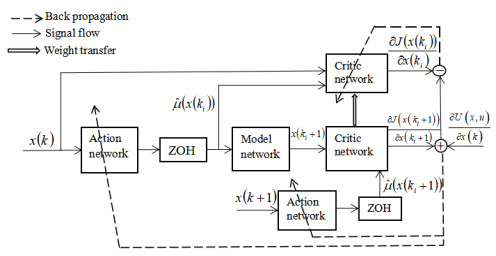
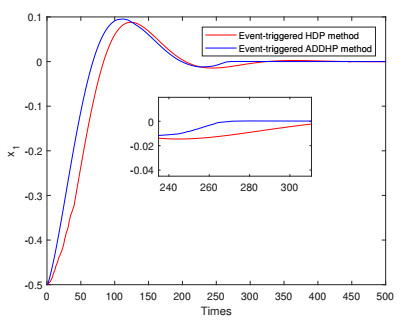
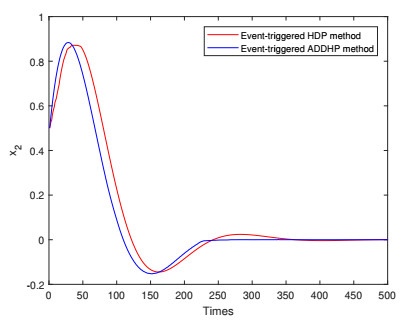
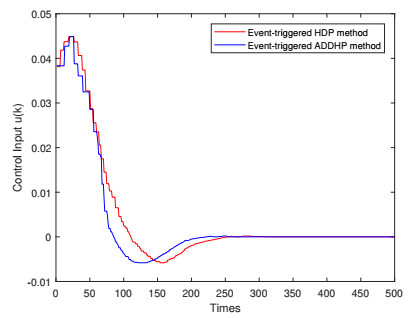
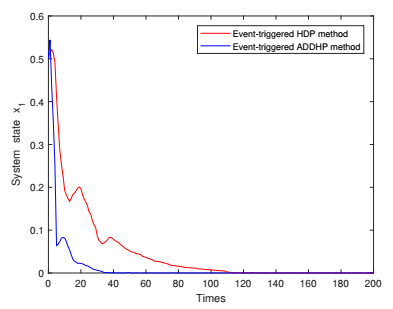
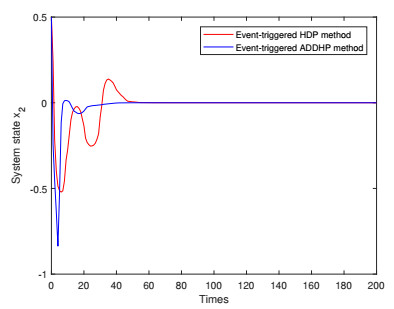
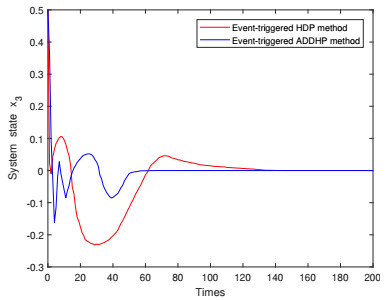
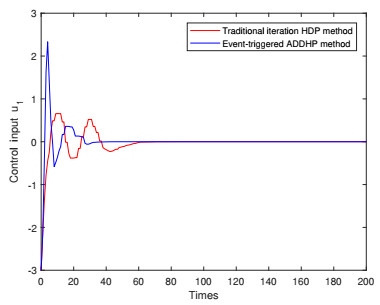
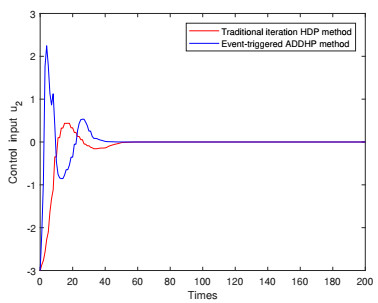


 DownLoad:
DownLoad: